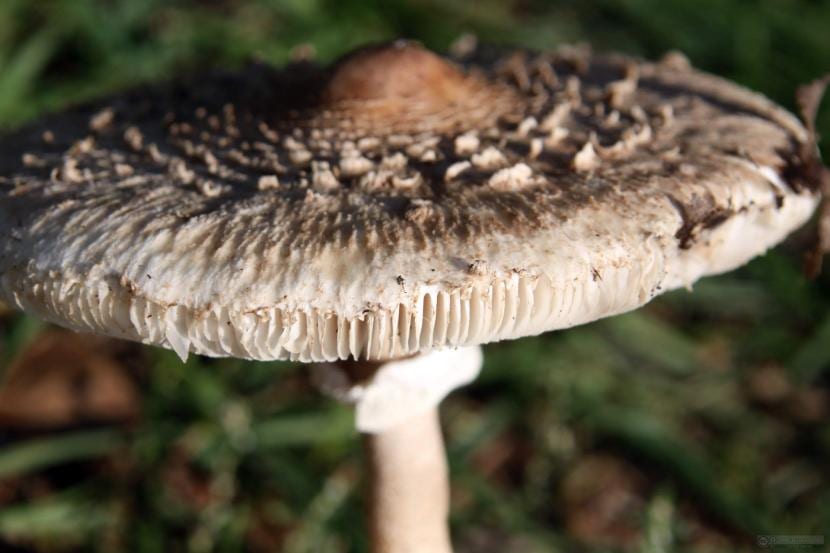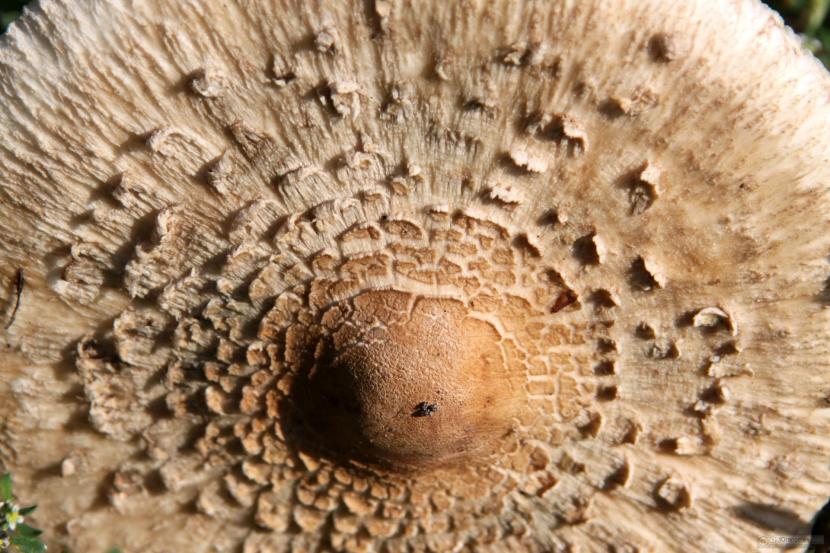
Do you like to go to the forest to look for mushrooms? These organisms are very curious living beings, so much so that they have common characteristics with plants and also with animals. The spores of our fungal companions are the equivalent of seeds, and the fact that they need to 'eat' trees might remind us of our need for food.
There are countless mushrooms around the world, but one of the most interesting is the parasol. A mushroom that has an exquisite taste.
Parasol Features

Our protagonist is scientifically known by the name of macrolepiota procera. Popularly it is called in different ways: parasol, galamperna, cucurril. It belongs to the Agaricaceae family, and bears fruit in autumn, when the temperatures begin to be low and abundant rains. It is easily distinguished since it is a fairly large mushroom, reaching a height of about 20-25cm, and fragrant.
With the first rainfall, the spore sprouts. At first it acquires a concave and closed shape, covered by brown scales. In a matter of a few days it will open to be completely flat, like the sun visor. Its diameter once opened can be up to 30cm, with some scales on the upper part which go away easily if we scratch a little on them.
Of the parasol the double ring what remains of his first days, the white sheets seen on the back of the sun visor, in addition to the dark brown dots they have on the stems.
Don't confuse them, you could get intoxicated

Although it is a very common mushroom in the mountains, you must be very careful not to confuse it with others. When we talk about mushrooms, it is very important that we know well how both those that are edible and the poisonous are, since otherwise we could risk our own life, unless we receive medical attention as soon as possible.
Parasols can be confused with those of the genre lepiota. Unlike the Macrolepiota, these fungi are smaller, and although they also have a ring, in this case it is a simple one, which in some species can be moved from top to bottom when it is loose. In addition, you must bear in mind that, if you cut the stem of the Parasol, it takes a long time to oxidize, that is, to acquire a reddish color. Those of the Lepiota rust quickly.
Most Lepiota are toxic, as they contain amanitin, which is one of the deadliest toxins out there. The fatal dose is only 0,1mg / kg, that is, practically nothing, so, I insist, when you go to collect mushrooms, if you do not know them very well, take a photo of the Parasol and the Lepiota. In this way, it will be much easier for you to identify them. ,.
Symptoms of poisoning

The symptom The most frequent types of poisoning are the following:
- Seizures
- Confusion
- Delirium
- Loss of consciousness
- Coma
Damage to the body
Amanitin is a toxin that will damage the entire renal system, injuring the pancreas, the intestines, the most serious problem being liver necrosis.
Transmission
Regrettably, there is no antidoteTherefore, medical care will be based on life support measures. Typically, a stomach cleanse will be performed, activated charcoal will be administered, and the body will be hydrated to regain any minerals it may have lost.
When are the umbrellas collected?

These delicious mushrooms are harvested throughout the fall, even into early winter if the weather is mild or with late frosts. I recommend that you go with a few bags or baskets, since appear in groups of two or more. It is very, very rare to see just one parasol.
These mushrooms sprout in forests and on roadsides, almost always protected from direct sun, since the sun's rays could damage them.
Tips for harvesting
To be able to taste the parasols this year and all those who come, you must keep in mind a series of things so that they sprout again, and they are:
- You have to cut them with a razor, and do not tear them off. Otherwise we would take with us the mycelium that is in the subsoil, and in the next season it would not sprout again.
- You don't have to take them all. It is convenient to leave several so that there are more spores and, consequently, more specimens.
- Use open containers, like wicker baskets without a lid. Thus, they receive air and fermentation is delayed.
- Remove the stem when you go to cook them, since these are not edible.
- And, for safety, do not take those that are or begin to be fermented, as they could cause indigestion.
Nutritional properties of the parasol

Mushrooms, and especially the parasol, are a food widely consumed throughout the world for thousands of years. And everything has a reason, and that is that, in addition to pleasing the most demanding palates, they are very nutritious. If you don't believe me, keep reading ...:
They are low in calories
Yes, yes, 100 grams of mushrooms contain only 20 calories. This is thanks to its high water content, which is 90ml per 7 grams. Thus, they are an excellent food to hydrate.
They are a source of vitamins and minerals

Specifically, they have a high content of provitamin D2, which is very important since it favors the absorption of calcium and phosphorus. But also, we emphasize that it is a source of vitamins from group B, which keep the immune system strong healthy, and make the body grow and develop properly.
But not only do parasols have vitamins, but also minerals, such as iodo which is responsible for regulating metabolism, potassium that maintains the muscular system, and match thanks to which we can obtain energy.
For all these reasons, these mushrooms are real delicacies. A food that cannot be missing in your kitchen during the months of the autumn period. You can use them to accompany dishes, as a snack, fried with a little salt or cooked. I can tell you that my family, after cutting them, puts them in the pot with chickpeas or rice.
So now you know, go in search of parasols to taste an exceptional flavor.
the parasol it feeds on
Hello Laura.
From plants, specifically, from decomposing organic matter.
A greeting.
You can have an orange tree in a pot and it will bear fruit
Hi Lourdes.
Yes, you can, but you have to prune it. It is best to buy a dwarf orange tree if you do not have much experience in pruning plants, although they are a bit more expensive.
If you have doubts about how to prune, upload an image of your orange tree and I will tell you.
A greeting. 🙂
Hola!
The other day my parents and I found two mushrooms or mushrooms in one of the pots where we have planted chives and cabbages. I thought that a photo could be attached to the message so that you could tell me if that fungus is dangerous or not. I comment on it in this post because the shape it has reminds me of the parasol, but the rim of the glass has turned a blackish color.
I hope you can help me to know what to do with them,
Thank you
Hello, Marina.
No, you cannot send images from here, but you can do it on our Facebook profile if you want. Click here.
So we can help you 🙂
Regards!